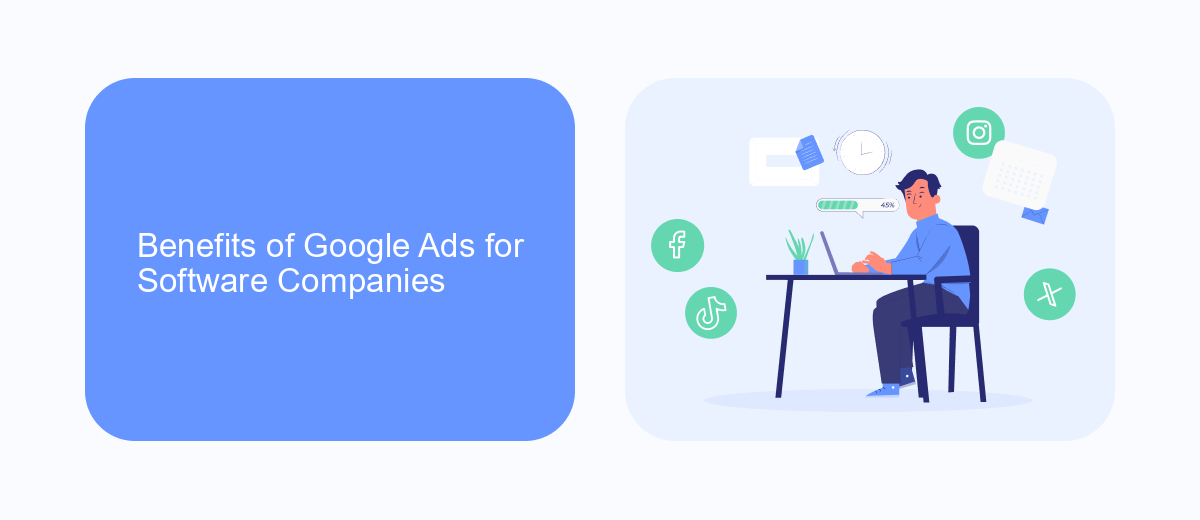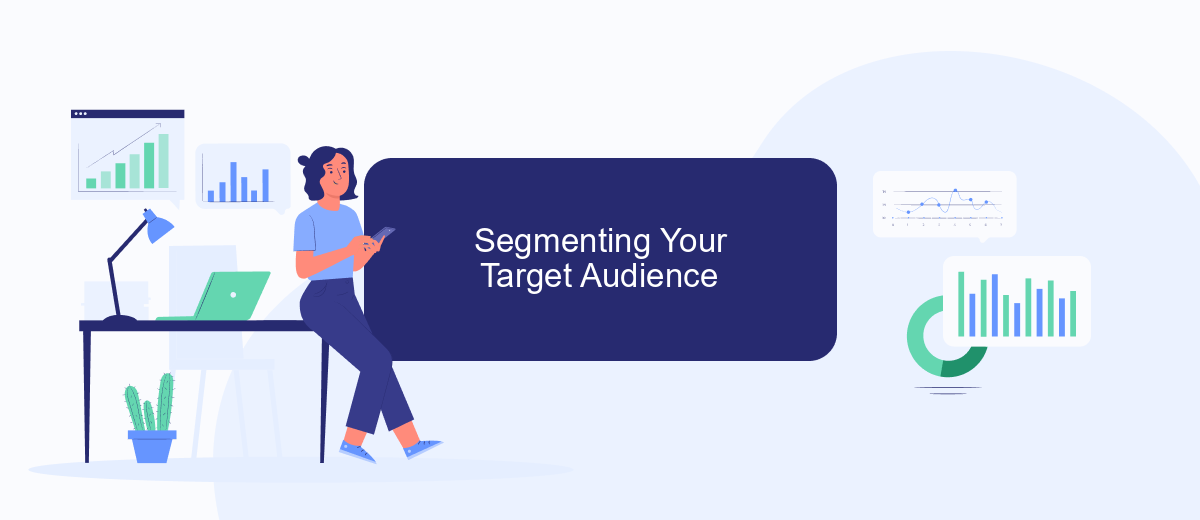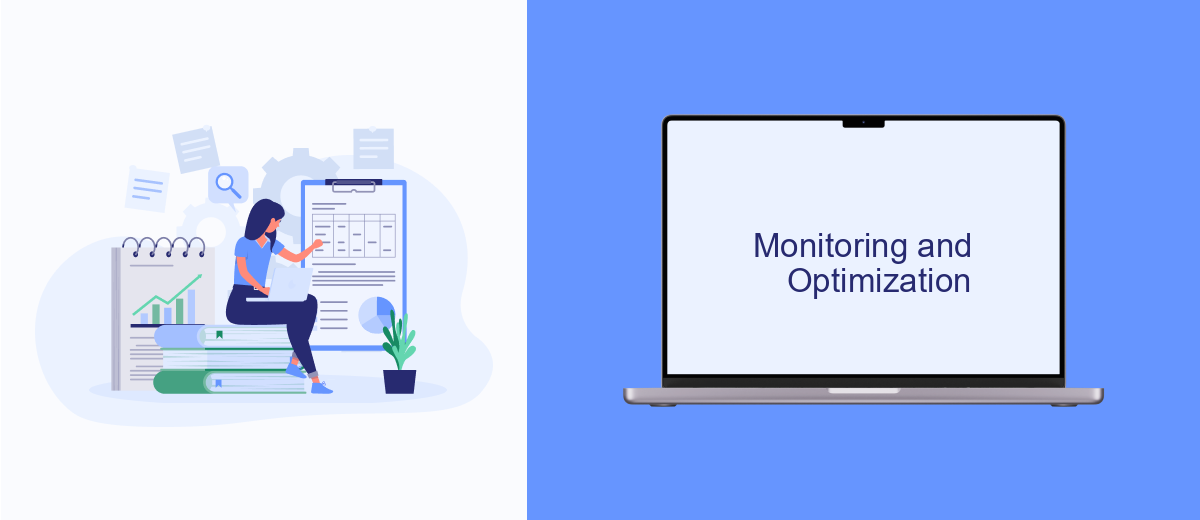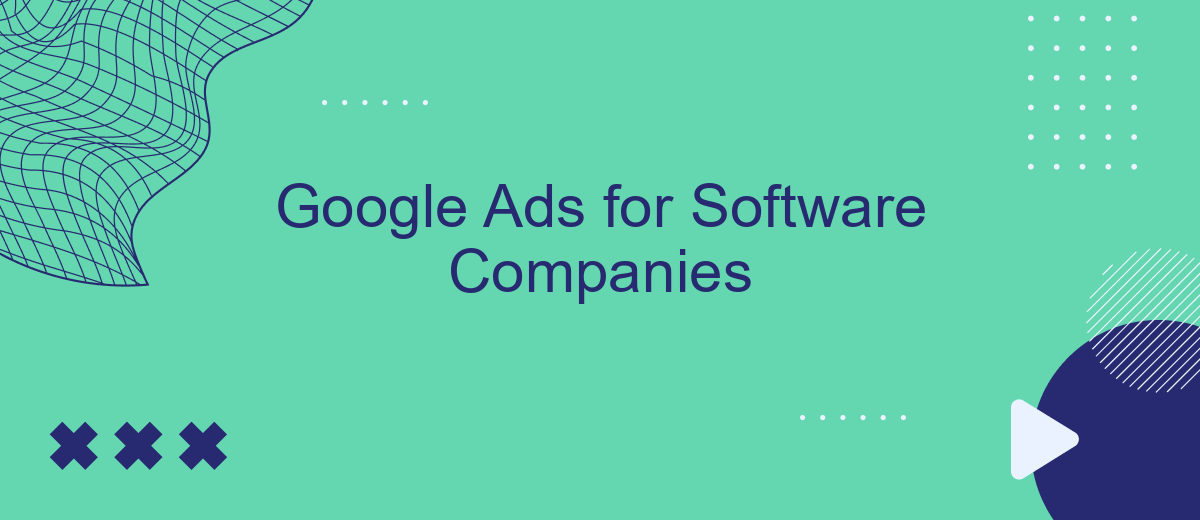In the competitive landscape of the software industry, effective marketing strategies are crucial for success. Google Ads offers powerful tools to help software companies reach their target audience, drive traffic, and increase conversions. This article explores how software companies can leverage Google Ads to maximize their online presence and achieve their business goals.
Google Ads Best Practices for Software Companies
Google Ads can be a powerful tool for software companies to reach their target audience and drive conversions. To maximize the effectiveness of your campaigns, it's essential to follow best practices tailored to your industry.
- Keyword Research: Focus on high-intent keywords relevant to your software solutions. Use tools like Google Keyword Planner to identify and target these keywords.
- Ad Copy: Craft compelling ad copy that highlights your software's unique features and benefits. Include strong calls-to-action to encourage clicks.
- Landing Pages: Ensure your landing pages are optimized for conversions. They should be relevant to the ad, load quickly, and provide clear value propositions.
- Integration: Utilize services like SaveMyLeads to automate the integration of leads from Google Ads directly into your CRM or email marketing platform, ensuring seamless follow-up.
- Performance Tracking: Regularly monitor and analyze your campaign performance using Google Analytics and Google Ads reports. Adjust your strategies based on data-driven insights.
By adhering to these best practices, software companies can effectively leverage Google Ads to attract potential customers, improve conversion rates, and ultimately drive business growth. Consistent monitoring and optimization are key to staying ahead of the competition and achieving long-term success.
Benefits of Google Ads for Software Companies

Google Ads offers software companies a unique opportunity to reach a highly targeted audience. By leveraging advanced targeting options such as keywords, location, and demographics, software companies can ensure their ads are shown to potential customers who are actively searching for software solutions. This precise targeting helps maximize the return on investment, as ads are displayed to users who are more likely to convert. Additionally, Google Ads provides detailed analytics and reporting, allowing companies to track the performance of their campaigns and make data-driven decisions to optimize their advertising strategy.
Another significant benefit of Google Ads for software companies is the ability to integrate with various tools and services to streamline the lead generation process. For example, SaveMyLeads allows software companies to automate the transfer of leads from Google Ads directly into their CRM or other marketing platforms. This seamless integration reduces manual data entry, minimizes the risk of errors, and ensures that leads are promptly followed up on. By using services like SaveMyLeads, software companies can enhance their marketing efficiency and focus more on nurturing and converting leads into loyal customers.
Segmenting Your Target Audience

Segmenting your target audience is crucial for maximizing the effectiveness of your Google Ads campaigns. By understanding who your potential customers are, you can tailor your ads to meet their specific needs, thereby increasing your chances of conversion. Here’s how you can segment your audience effectively:
- Demographics: Identify key demographic factors such as age, gender, income level, and education. This helps in creating more personalized ad content.
- Geographic Location: Target users based on their location. This is especially useful for software companies offering region-specific services.
- Behavioral Data: Analyze user behavior, such as past purchases and website interactions, to create segments that reflect their interests and needs.
- Technographics: Segment users based on the technology they use, such as operating systems, devices, and software preferences.
- Psychographics: Understand the lifestyle, values, and interests of your audience to create more engaging and relevant ads.
To streamline the process of segmenting your target audience, consider using integration services like SaveMyLeads. This tool helps you automate data collection and segmentation, ensuring that your Google Ads campaigns are always targeting the right audience. By leveraging such services, you can save time and focus on optimizing your ad strategies for better results.
Monitoring and Optimization

Effective monitoring and optimization are crucial for maximizing the performance of your Google Ads campaigns. Start by regularly reviewing key performance indicators (KPIs) such as click-through rates (CTR), conversion rates, and cost per acquisition (CPA). Analyzing these metrics will help you identify areas where your campaigns are performing well and areas that need improvement.
To streamline the monitoring process, consider using automated tools and integrations. SaveMyLeads, for instance, can help you automate the process of capturing leads from your Google Ads campaigns and sending them directly to your CRM or other marketing tools. This ensures that you have real-time data for more accurate monitoring and decision-making.
- Set up automated alerts for significant changes in KPIs.
- Use A/B testing to compare different ad variations.
- Regularly update your negative keyword list to avoid irrelevant clicks.
- Leverage audience segmentation to target specific user groups more effectively.
Continuous optimization is key to maintaining the effectiveness of your campaigns. Regularly update your ad copy, adjust your bidding strategies, and refine your targeting based on the data you collect. By staying proactive and using tools like SaveMyLeads, you can ensure that your Google Ads campaigns deliver the best possible results for your software company.
Integrating with SaveMyLeads and Other Tools
Integrating Google Ads with tools like SaveMyLeads can significantly streamline your marketing efforts and enhance lead management for software companies. SaveMyLeads offers a seamless way to connect your Google Ads account with various CRM systems, email marketing platforms, and other essential tools. By automating the transfer of leads from Google Ads directly to your preferred platforms, you can ensure that no potential customer slips through the cracks, enabling a more efficient follow-up process and improved conversion rates.
Additionally, SaveMyLeads supports a wide range of integrations, allowing you to customize workflows that best suit your business needs. Whether you are looking to sync leads with Salesforce, Mailchimp, or any other service, the platform provides easy-to-use, no-code solutions that require minimal technical expertise. This integration capability not only saves time but also reduces the risk of human error, ensuring that your marketing data is always accurate and up-to-date. Leveraging tools like SaveMyLeads can transform your Google Ads campaigns into a more powerful and cohesive component of your overall marketing strategy.
FAQ
What is Google Ads and how can it benefit software companies?
How much does it cost to run Google Ads for a software company?
What kind of ads should software companies use on Google Ads?
How can software companies track the effectiveness of their Google Ads campaigns?
What are some best practices for optimizing Google Ads campaigns for software companies?
You probably know that the speed of leads processing directly affects the conversion and customer loyalty. Do you want to receive real-time information about new orders from Facebook and Instagram in order to respond to them as quickly as possible? Use the SaveMyLeads online connector. Link your Facebook advertising account to the messenger so that employees receive notifications about new leads. Create an integration with the SMS service so that a welcome message is sent to each new customer. Adding leads to a CRM system, contacts to mailing lists, tasks to project management programs – all this and much more can be automated using SaveMyLeads. Set up integrations, get rid of routine operations and focus on the really important tasks.
